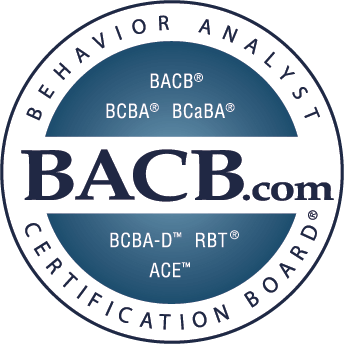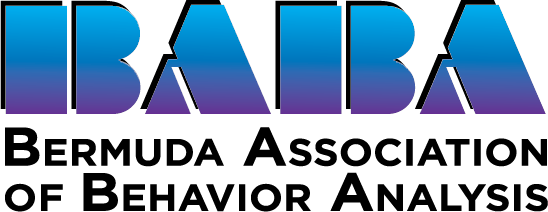12th Annual Autism Rocks Socks Day
Fri. 11 Apr, 2025 Join Tomorrow's Voices for our 12th Annual Autism Rocks Socks Fundraiser in Celebration of Autism... read more...FREE - Special Autism Awareness Month Workshop - Building Bridges
Wed. 9 Apr, 2025 Join Tomorrow's Voices for our Autism Awareness Month Workshop Building Bridges:Supporting ... read more...Our Wish List
Thank you for wanting to support our Charity. Please take a look at our Wish List which will help Tomorrow's Voices continuie to support our wonderful clients throughout the year.
Read more ...
A complex condition, autism is the most commonly diagnosed pervasive developmental disorder. Autism is a neurological and developmental disorder that usually appears during the first three years of life.
To bring positive change to the lives of people with autism, pervasive developmental disorders and other developmental delays through research based best educational practices.
If you are the parent or a loved one of a child who has been diagnosed with autism or other developmental disability, you at one time probably experienced shock, surprise, grief, trepidation, uncertainty, confusion and perhaps even sadness.
At some point however, these emotions gave way to resolve. And with that resolve came the commitment to finding the very best therapy available for your child in an effort to give them the best possible opportunity at life.
During your search, you may have come across the term ABA, which is short for Applied Behaviour Analysis. Perhaps you discovered this term while reading through the Recommendations Section in a diagnostic or psychological report from an overseas service provider, recommending 30 hour of intensive ABA therapeutic interventions as an early intervention strategy.
In order to understand, why researchers and many reputable service providers support ABA as an intervention for youth with autism and other developmental disabilities, it is important to understand what ABA is.
ABA is the science of changing behaviour and is derived from a set of scientific principles. Science is a discipline that uses systematic approaches to investigate and understand the natural world. In the case of ABA, we look to understand the connection between environmental variables and their impact on behaviour.
But we don’t just study any behaviour. We study socially significant behaviours or those behaviours that have meaning for the client and for the client’s significant others (Cooper, Heron & Heward, 2007).
The ‘Applied’ aspect of Applied Behaviour Analysis means that we don’t just take what we have learned in the laboratory or the university and leave it there. It means that we take our research and put it into practice. It means that we apply what our research suggests as being effective and we use that knowledge in natural settings to benefit and improve the lives of our clients.
Specifically, we manipulate stimuli in the environment in a manner that has been reliably shown to have an impact on socially significant behaviours some of which are communication, self care, academic and social behaviours.
The stimuli that we manipulate are called antecedents and consequences. Antecedents are stimuli that come before a behaviour has occurred and consequences are stimuli that occur immediately after behaviour has occurred.
A wide body of research indicates that ABA is an effective tool for teaching skills to youth and adolescents with autism and other developmental disabilities (Autism Speaks, 2012).
For more information on the research supporting Applied Behaviour Analytic Interventions, please see the research links on our useful websites page.
|
Tomorrow's Voices - Bermuda Autism Early Intervention Centre (Registered Charity #816)
|
|
| Address: | TN Tatem - #60 Middle Road, Warwick WK03 |
| Telephone: | 441-297-4342 |
| Fax: | 441-297-2342 |
| E-mail: | This email address is being protected from spambots. You need JavaScript enabled to view it. |
| Hours of Operation: | Monday - Friday 8:30 am to 5:30 pm |
Centers for Disease Control and Prevention - Autism Spectrum Disorder: https://www.cdc.gov/ncbddd/autism/index.html
Autism spectrum disorder (ASD) is a developmental disability that can cause significant social, communication and behavioral challenges. CDC is committed to continuing to provide essential data on ASD, search for factors that put children at risk for ASD and possible causes, and develop resources that help identify children with ASD as early as possible.
Autism Speaks: http://www.autismspeaks.org/
Autism Speaks was founded in February 2005 by Bob and Suzanne Wright, grandparents of a child with autism. Since then, Autism Speaks has grown into the nation's largest autism science and advocacy organization, dedicated to funding research into the causes, prevention, treatments and a cure for autism; increasing awareness of autism spectrum disorders; and advocating for the needs of individuals with autism and their families.
Wrightslaw: http://www.wrightslaw.com/
Parents, educators, advocates, and attorneys come to Wrightslaw for accurate, reliable information about special education law, education law, and advocacy for children with disabilities.
Council for Exceptional Children (CEC): http://www.cec.sped.org//AM/Template.cfm?Section=Home
The Council for Exceptional Children (CEC) is the largest international professional organization dedicated to improving the educational success of individuals with disabilities and/or gifts and talents. CEC advocates for appropriate governmental policies, sets professional standards, provides professional development, advocates for individuals with exceptionalities, and helps professionals obtain conditions and resources necessary for effective professional practice.
National Autism Center (NAC): http://www.nationalautismcenter.org/
The National Autism Center is May Institute's center for the promotion of evidence-based practice. It is a nonprofit organization dedicated to serving children and adolescents with Autism Spectrum Disorders (ASD) by providing reliable information, promoting best practices, and offering comprehensive resources for families, practitioners, and communities.
Council on Accreditation: http://www.coastandards.org/
The Council on Accreditation (COA) partners with human service organizations worldwide to improve service delivery outcomes by developing, applying, and promoting accreditation standards.
Association for Behavior Analysis International (ABAI): http://www.abainternational.org/
The Association for Behavior Analysis International® (ABAI) is a nonprofit membership organization with the mission to contribute to the well-being of society by developing, enhancing, and supporting the growth and vitality of the science of behavior analysis through research, education, and practice.
Behavior Analyst Certification Board (BACB): http://www.bacb.com/
The Behavior Analyst Certification Board®, Inc. (BACB®) is a nonprofit 501(c)(3) corporation established in 1998 to meet professional credentialing needs identified by behavior analysts, governments, and consumers of behavior analysis services. The BACB adheres to the national standards for boards that grant professional credentials.
The Individuals With Disabilities Education Act (IDEA): http://idea.ed.gov/
The Individuals with Disabilities Education Act (IDEA) is a law ensuring services to children with disabilities throughout the United States. IDEA governs how states and public agencies provide early intervention, special education and related services to more than 6.5 million eligible infants, toddlers, children and youth with disabilities.
Special Education needs and Disabilities Act 2001 (UK): http://www.legislation.gov.uk/ukpga/2001/10/contents
Special Education legislation for Great Britain.
Kennedy Kreiger Institute: http://www.kennedykrieger.org/
Kennedy Krieger Institute is an internationally recognized institution located in Baltimore, Maryland dedicated to improving the lives of children and adolescents with pediatric developmental disabilities through patient care, special education, research, and professional training.
Autism Society of America: http://www.autism-society.org/
Geneva Centre for Autism: http://www.autism.net/
National Autistic Society: http://www.nas.org.uk/
ABA-UK Yahoo group: http://groups.yahoo.com/group/ABA-UK/
DTT-NET Yahoo group: http://health.groups.yahoo.com/group/DTT-NET/
Abajobconnections yahoo group: http://groups.yahoo.com/group/abajobconnections/
Verbal Behaviour Yahoo group: http://health.groups.yahoo.com/group/VerbalBehavior/
Dr. Tony Attwood: http://www.tonyattwood.com.au/
PECS: http://www.pecs.com/
RDI: http://www.rdiconnect.com/
M-CHAT: http://www.dbpeds.org/articles/detail.cfm?TextID=377
Autism Checklist: http://www.autism-pdd.net/checklist.html
Caring For Seniors With Autism: https://www.parentgiving.com/elder-care/caring-for-seniors-with-autism/
A complex condition, autism is the most commonly diagnosed pervasive developmental disorder. Autism is a neurological and developmental disorder that usually appears during the first three years of life. Autism impairs a person’s ability to communicate both verbally and non-verbally, to form relationships and to interact with others. It also typically results in a range of unusual and repetitive behaviors. Autism is classified as a spectrum disorder which means, it can vary from mild to severe. In many cases, individuals with Autism will show uneven levels of intelligence, with highly developed talents in some areas.
The core symptoms that define autism consist of deficits of varying degrees in three areas of development:
- defective social or personal relatedness behaviors
- language or, more broadly, communication difficulties
- play or preferred activities which are characterized by preoccupations having a repetitive or stereotyped quality
Through medical research, the condition known as autism has been considerably broadened to include many childhood developmental disorders. Today the term of pervasive developmental disorder is often applied to identify what is commonly called autism. PDD disorders include: Autistic Disorder, Rett’s Disorder, Childhood Disintegrative Disorder, Asperger’s Disorder and PDD not otherwise specified.
The severity of autism varies widely. Experts are beginning to agree that the cause of autism has neurobiological origins, and is not the result of poor parenting (an early misconception). Current research is showing that there are brain differences between the person with autism and his or her typical counterpart and it is the dysfunction of specific nerve networks that appears to be responsible for the behaviors observed in autism. Unfortunately, the precise cause of autism in the majority of children is not yet well understood.
The US Centers for Disease Control and Prevention updated its statistic in 2023 for the prevalence of Autism. It was found that 1 in 36 children are living with Autism Spectrum Disorder (ASD). ASDs occur in all racial, ethnic, and socioeconomic groups and are four times more likely to occur in boys than in girls.
The diagnostic standard used to identify Autism is called the Diagnostic and Statistical Manual of Mental Disorders of the American Psychiatric Association, fourth edition (DSM-IV). It includes diagnostic criteria grouped into three categories. Individuals with Autism may not necessarily have all the signs and symptoms as described below.
The core symptoms that define Autism consist of deficits of varying degrees in three areas of development:
- Impairment in social interaction:
- Impairment in the use of nonverbal behaviors such as lack of eye contact, unable to read facial expressions or respond to social cues and gestures.
- Failure to interact and to develop appropriate peer relationships.
- A lack of spontaneous seeking to share enjoyment, interests, or achievements with other people (e.g. lack of showing, bringing, or pointing out objects of interest).
- Prefer isolation and appear uninterested in other people, lack of social or emotional reciprocity.
- Impairments in language, or more broadly communication difficulties:
- Delay in or total lack of, the development of spoken language.
- In individuals with adequate speech, a marked impairment in the ability to initiate or sustain a conversation with others.
- Echolalia (rote repetition of words or phrases) or repetitive use of language or idiosyncratic language.
- Lack of varied, spontaneous make believe or social imitative play appropriate to developmental level.
- Impairments in play or preferred activities which are characterized by preoccupations of having a repetitive or stereotyped quality:
- Display repetitive patterns of behavior such as hand flapping, eye-gazing (starring or looking from the side of the eye), body rocking, grimacing, and vocalizations
- Encompassing preoccupation with one or more stereotyped and restricted patterns of interest that is abnormal either in intensity or focus.
- Display apparently inflexible adherence to specific, nonfunctional routines or rituals.
- Have an abnormal interaction with toys that may include an extreme focus on parts of objects.
- Two other popular rating scales that are sometimes used to help diagnose and determine the severity of Autism are the Childhood Autism Rating Scale (CARS) and the Autism Behavior Checklist.
Page 6 of 11

















